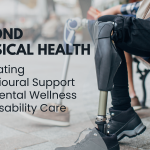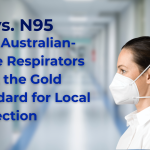Here’s something most gym-goers get wrong: your real workout starts after you rack the weights. That 24-48 hour window following training? That’s where champions are made, or broken. Science backs this up hard. Research confirms that massage stands as the most powerful technique for bouncing back from DOMS and exhaustion.
When you master evidence-based post-exercise recovery methods, everything changes. You’re not just training anymore, you’re systematically building a better body. Athletic performance or weekend warrior status doesn’t matter. What matters? Using proven methods that trigger adaptation and prepare you to dominate your next session.
Critical Elements of Best Recovery Strategies
You’ve got the timeline. You understand cellular mechanics. Now let’s dive into the strategies that actually move the needle on recovery speed and training adaptations.
Nutrient Timing for Maximum Muscle Recovery
That mythical “anabolic window” everyone obsessed over? Turns out it’s wider than we thought. But timing still carries weight. Hit 0.25-0.40g of protein per kilogram of body weight within a few hours post-training. Your muscles will thank you. Carbohydrate requirements? They scale with your training style, marathon runners need vastly different fuel than powerlifters.
Beyond basic hydration, fast hydration drinks formulated with electrolytes restore your sodium-potassium balance with brutal efficiency compared to plain water. These specialized beverages push your cells back to optimal function significantly faster. We’re talking up to three times quicker rehydration versus water alone, a game-changer for anyone serious about recovery science.
Active Recovery Approaches
Low-intensity movement isn’t about “staying busy.” It’s strategic. Gentle walking, swimming, or yoga sessions drive blood flow into damaged tissue, delivering nutrients without piling on training stress. Sometimes complete rest wins though, particularly after sessions that hammer your central nervous system into submission.
Context matters enormously. What works for a CrossFit athlete might sabotage a cyclist’s recovery. Match your protocol to your sport.
The Science Behind Post-Exercise Recovery
Want to know the real secret? It’s not what happens during training, it’s what happens after. Once you grasp the biological reality unfolding inside your muscles post-workout, every recovery choice you make suddenly carries weight.
Metabolic Windows (0-48 Hours Post-Workout)
Think of recovery in phases. Right after training (0-2 hours), your body scrambles to restore energy and flip on repair switches. Then comes the short-term window (2-24 hours) when inflammation hits its peak while metabolic waste gets cleared out.
But here’s where magic happens: the 24-48 hour adaptation phase. This is your body’s construction zone. Protein synthesis kicks into high gear, rebuilding damaged fibers into something tougher than before. Understanding this timeline reveals why how to recover after workout isn’t some minor detail, it’s everything.
Understanding Exercise-Induced Muscle Damage
Those micro-tears in your muscle fibers after crushing a workout? That’s not injury, that’s progress. Your body reads those signals and launches controlled inflammation to start repairs. Your job isn’t to block this process. It’s to fuel it.
Critical distinction: acute inflammation rebuilds you. Chronic inflammation destroys you. Smart recovery keeps that inflammatory response sharp and temporary, never letting it linger into something that steals your gains.
Advanced Muscle Recovery Tips
Nutrition, hydration, and intelligent rest form your base. But elite performers? They’re leveraging additional tools that slash recovery time by 30% or more. Here’s their playbook.
Temperature Manipulation Techniques
Hot-cold contrast showers work on a 3:1 rhythm, three minutes hot water, one minute cold, cycle through several rounds. Ice baths should hit 50-59°F for 10-15 minutes max. Elite endurance athletes rely heavily on sauna sessions (96.7%), massage therapy (86.9%), and extended sleep as their go-to recovery methods.
Cryotherapy chambers get hyped, but they’re optional. Traditional temperature work delivers results when you stay consistent.
Sleep Optimization
Most athletes massively underestimate this: sleep quality trumps any supplement for muscle recovery tips. Growth hormone floods your system during deep sleep, that’s when cellular repair operates at peak capacity. Target 7-9 hours nightly with consistent bed and wake times.
Strategic 20-30 minute power naps can amplify recovery, especially for two-a-day training schedules. Wearable tech like Oura or Whoop reveals your sleep architecture, showing exactly whether your rest supports or sabotages recovery.
Nutritional Strategies for Instant Performance Boost
Temperature work, compression gear, and optimized sleep set the stage. But without proper nutritional fuel? Your body can’t finish the rebuilding job. Let’s lock in your eating strategy.
Post-Workout Meal Composition
Complete proteins matter: chicken breast, salmon, eggs, Greek yogurt, or plant-based options like quinoa and tempeh. Pair them with fast-absorbing carbs, think white rice or potatoes immediately post-training. Save slower-digesting carbs like steel-cut oats for later meals. Don’t fear healthy fats either. They drive hormone production that’s essential for adaptation.
Quick example: grilled chicken, jasmine rice, and roasted vegetables drizzled with olive oil hits all the marks.
Strategic Supplementation
Creatine monohydrate (5g daily) powers cellular energy systems with decades of research support. Omega-3 fatty acids (2-3g EPA/DHA) naturally modulate inflammation. Tart cherry juice shows legitimate promise for cutting soreness, though whole foods should dominate your plate.
Magnesium (300-400mg) helps muscles relax and supports deeper sleep. BCAAs might help fasted training, but complete protein sources usually outperform them.
Tracking Your Recovery Progress
Once you’ve dialed in your personal recovery system, measurement becomes your competitive edge. You can’t optimize what you don’t quantify.
Key Biomarkers to Monitor
Check your resting heart rate every morning. Consistent elevation? You’re not recovered. Heart rate variability (HRV) offers deeper insight into nervous system balance. Sharp HRV drops signal you’re overdoing it.
Simple grip strength tests expose central nervous system fatigue. Subjective wellness questionnaires catch problems before they explode. Technology like Whoop, Oura Ring, or Garmin automates most of this tracking work.
Common Recovery Mistakes
Overtraining without adequate rest tops every list of recovery blunders. Your training frequency must align with your recovery capacity, ignore this and watch your progress flatline or reverse. Strategic deload weeks every 4-6 weeks prevent accumulated fatigue from burying you.
Inadequate calories during recovery periods sabotage adaptation. You cannot build muscle in a severe deficit. Ignoring pain signals? That’s how you earn injuries that bench you for months.
Final Thoughts on Recovery Optimization
Implementing these best recovery strategies creates compounding returns on your performance over time. Build your foundation first: proper hydration, balanced nutrition, quality sleep. Then layer in advanced modalities.
Remember, recovery isn’t passive downtime. It’s where your training adaptations actually materialize. That instant performance boost you’re chasing? It comes from treating recovery as seriously as you treat training itself. Track your progress for 30 days. You’ll see measurable improvements in both performance metrics and how you feel during workouts.
Your Questions About Recovery Answered
How long should you wait before training the same muscle group again?
Most people require 48-72 hours between intense sessions targeting identical muscle groups. Recovery capacity varies based on training experience, sleep quality, nutrition, and workout intensity. Beginners often need more time; seasoned athletes sometimes bounce back faster.
What’s the fastest way to recover from intense exercise?
Begin with hydration and electrolyte replacement within 30 minutes. Get protein and carbohydrates within two hours. Add light active recovery movement. Then prioritize exceptional sleep quality that night. These combined strategies outperform any single tactic.
Does foam rolling actually help with recovery?
Research confirms foam rolling can reduce perceived muscle soreness and temporarily improve range of motion. It won’t dramatically accelerate biological recovery processes, but the circulation benefits and reduced stiffness justify including it as part of a comprehensive strategy.
Lynn Martelli is an editor at Readability. She received her MFA in Creative Writing from Antioch University and has worked as an editor for over 10 years. Lynn has edited a wide variety of books, including fiction, non-fiction, memoirs, and more. In her free time, Lynn enjoys reading, writing, and spending time with her family and friends.















